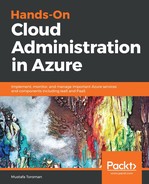So, how secure is Azure really? Let's start by saying very secure.
Microsoft is investing heavily in Azure, and particularly in Azure Security. Azure has extensive compliance offerings, including HIPAA, FFIEC, PCI DSS, ISO 9001, and ISO 27001, just to name a few.
Azure Security starts with physical security. Data center has dedicated security staff around the clock; everything is covered by cameras and alarms, and there are several layers of perimeter checks.
To enter the Azure data center, you need to pass several checkpoints and provide valid authentication and authorization. Authentication is done on multi-factor levels, and besides providing a PIN or password, you must pass biometric and card reader checks as well.
Everything within data centers is encrypted and secure. All data is encrypted at rest, and even if someone manages to steal a disk containing your data, it would be unusable. All data transferring is also encrypted per industry standards.
Another important part of data security is redundancy to ensure that data is never lost. The default redundancy in Azure is 3 (three). When you create a new resource, Azure VM for example, a disk is created with three copies. This ensures that data is always available, and even if one disk fails, there are an additional two copies. Redundant 3 is present even with backup power generators; if one fails, there are two additional backups.
And even Microsoft is heavily involved in Azure Security; it's not enough to put your data into Azure for it to be safe. The partnership with Microsoft takes care of one part of security and provides various tools and services to help you stay secure. However, you are responsible for how you implement these tools and put them to use.
